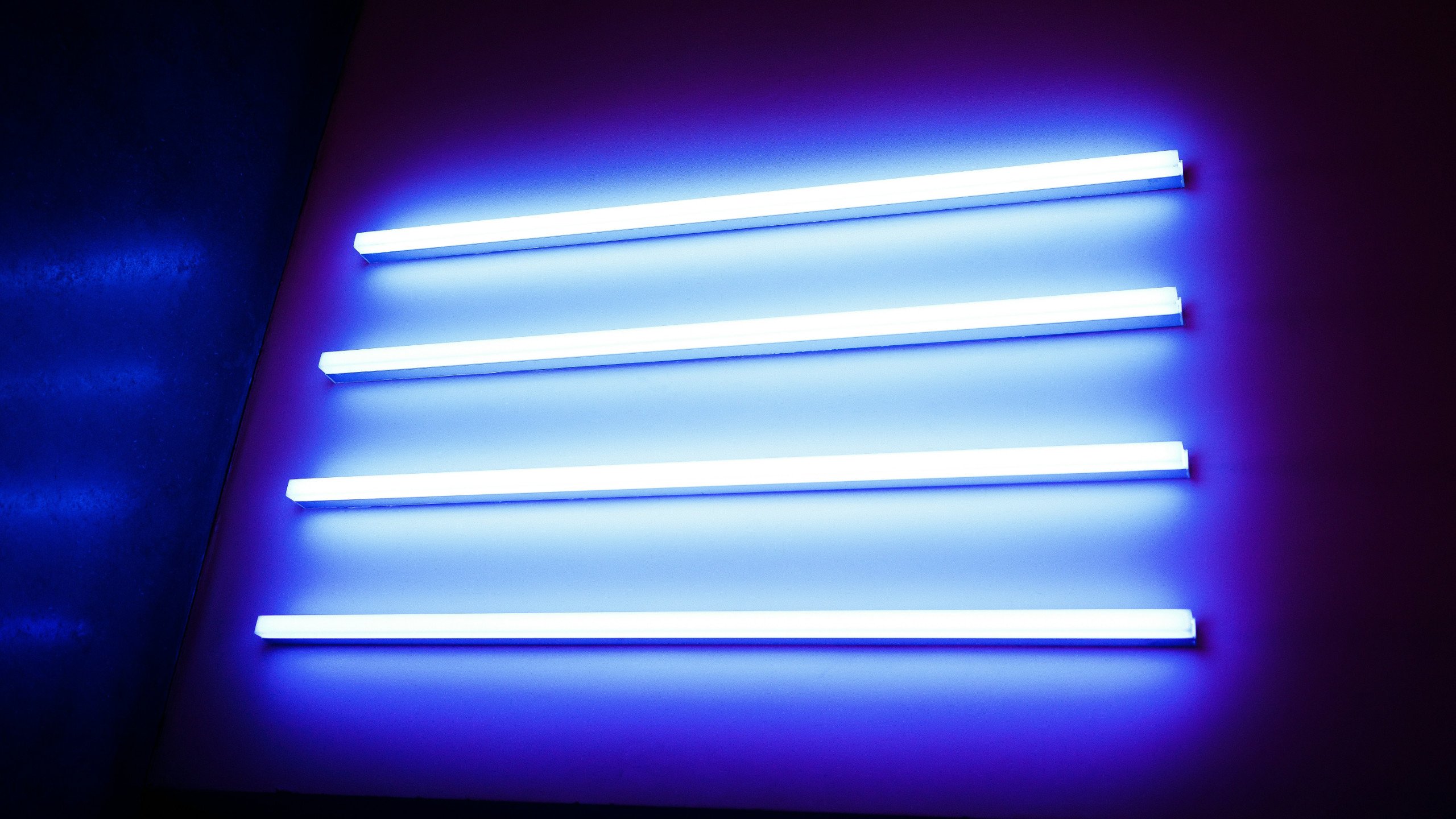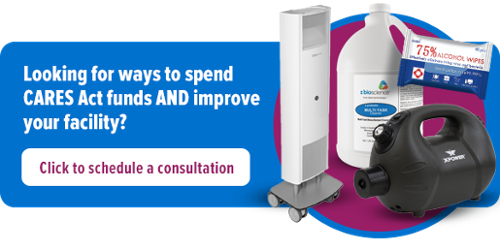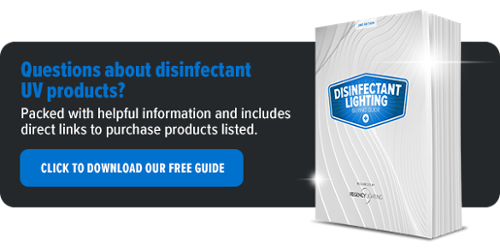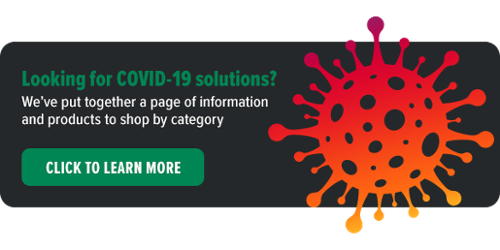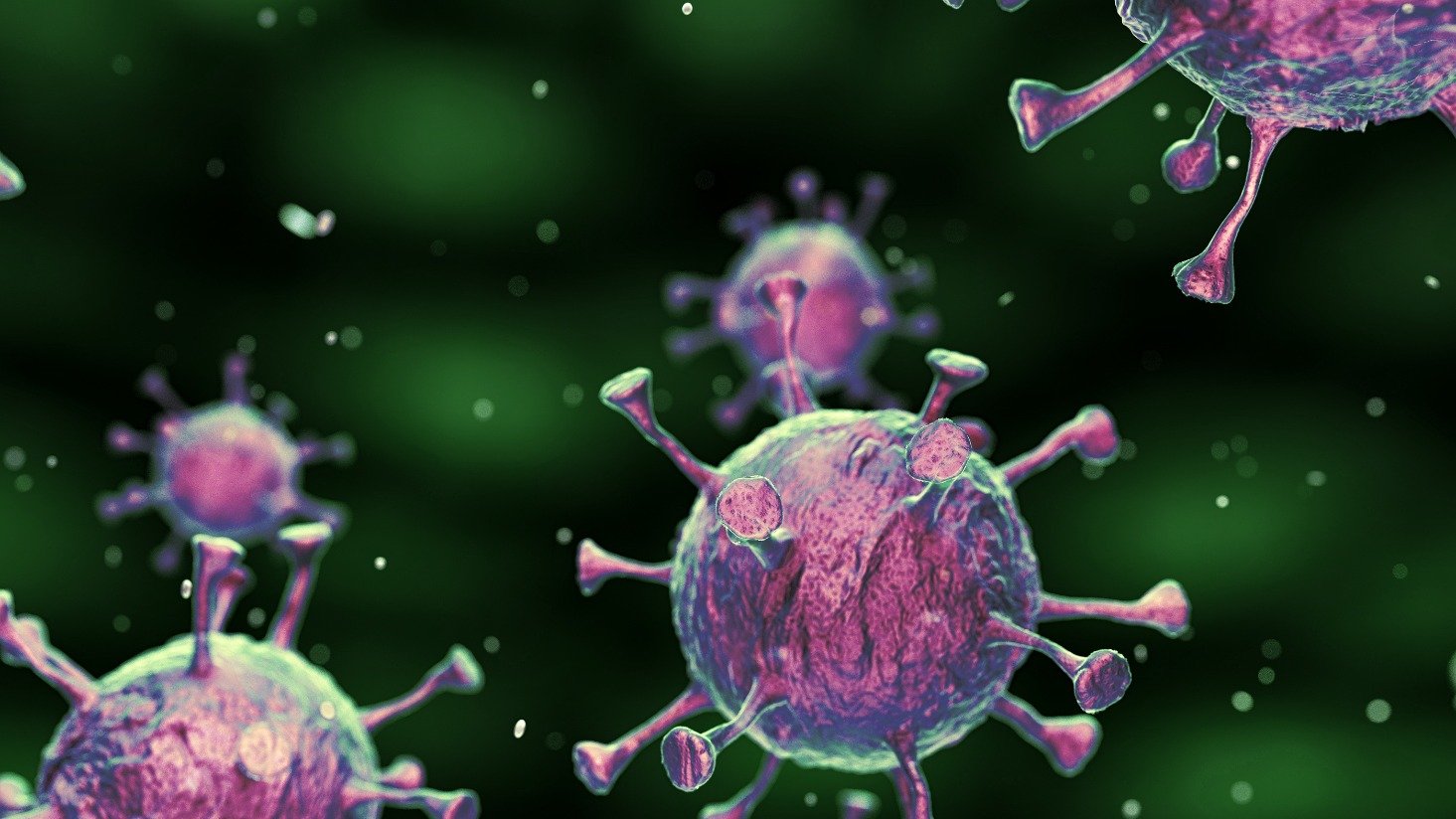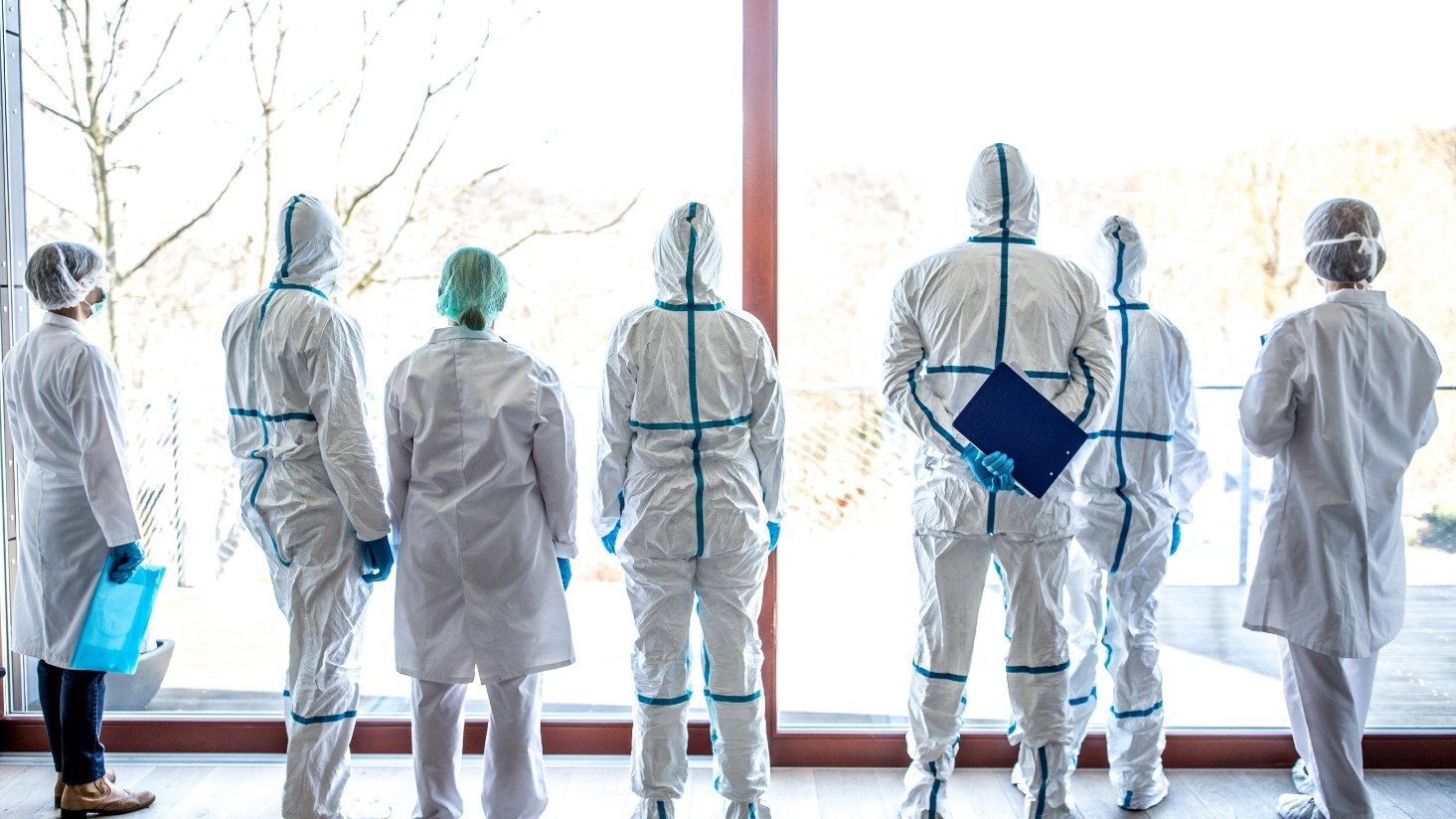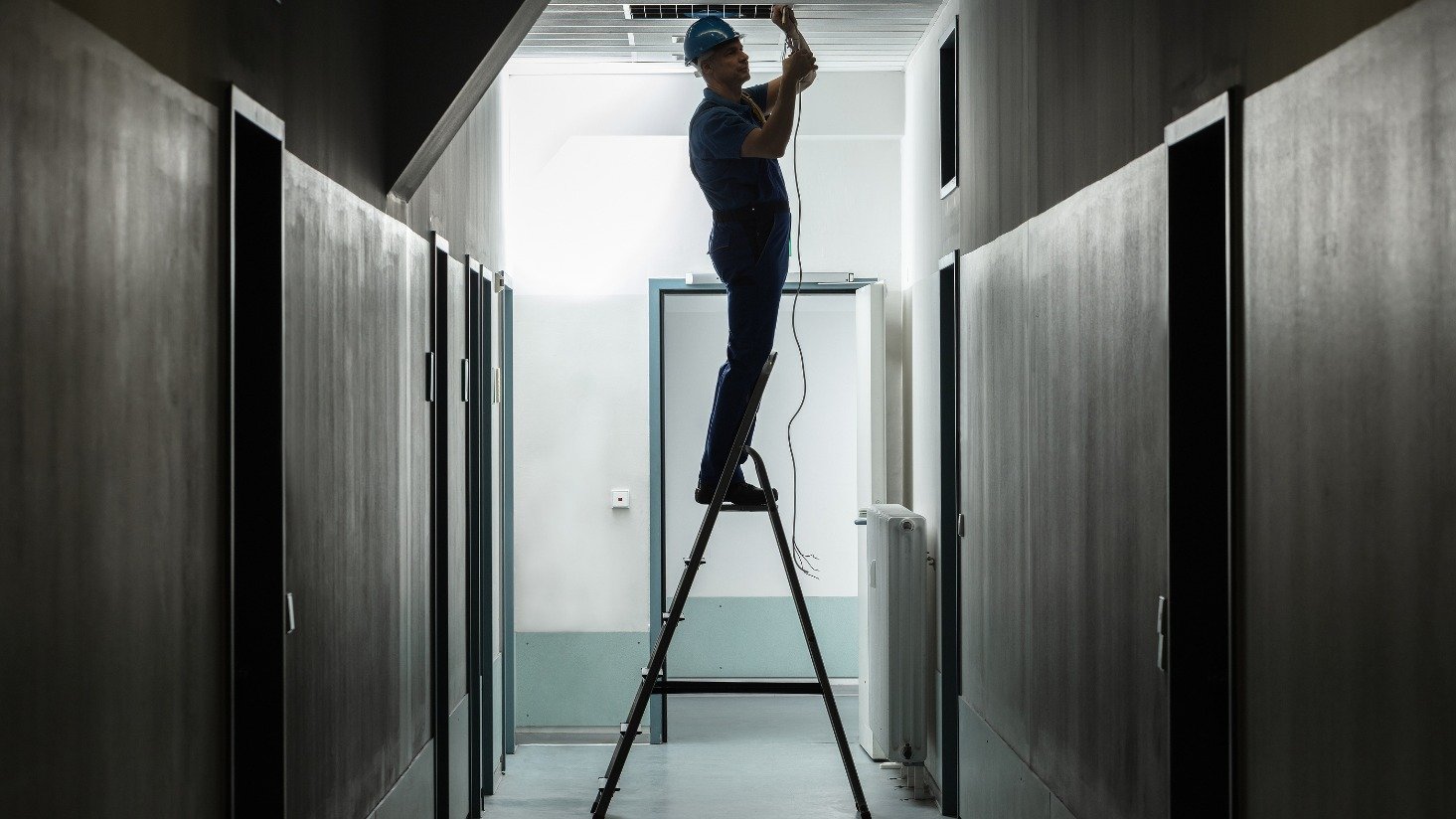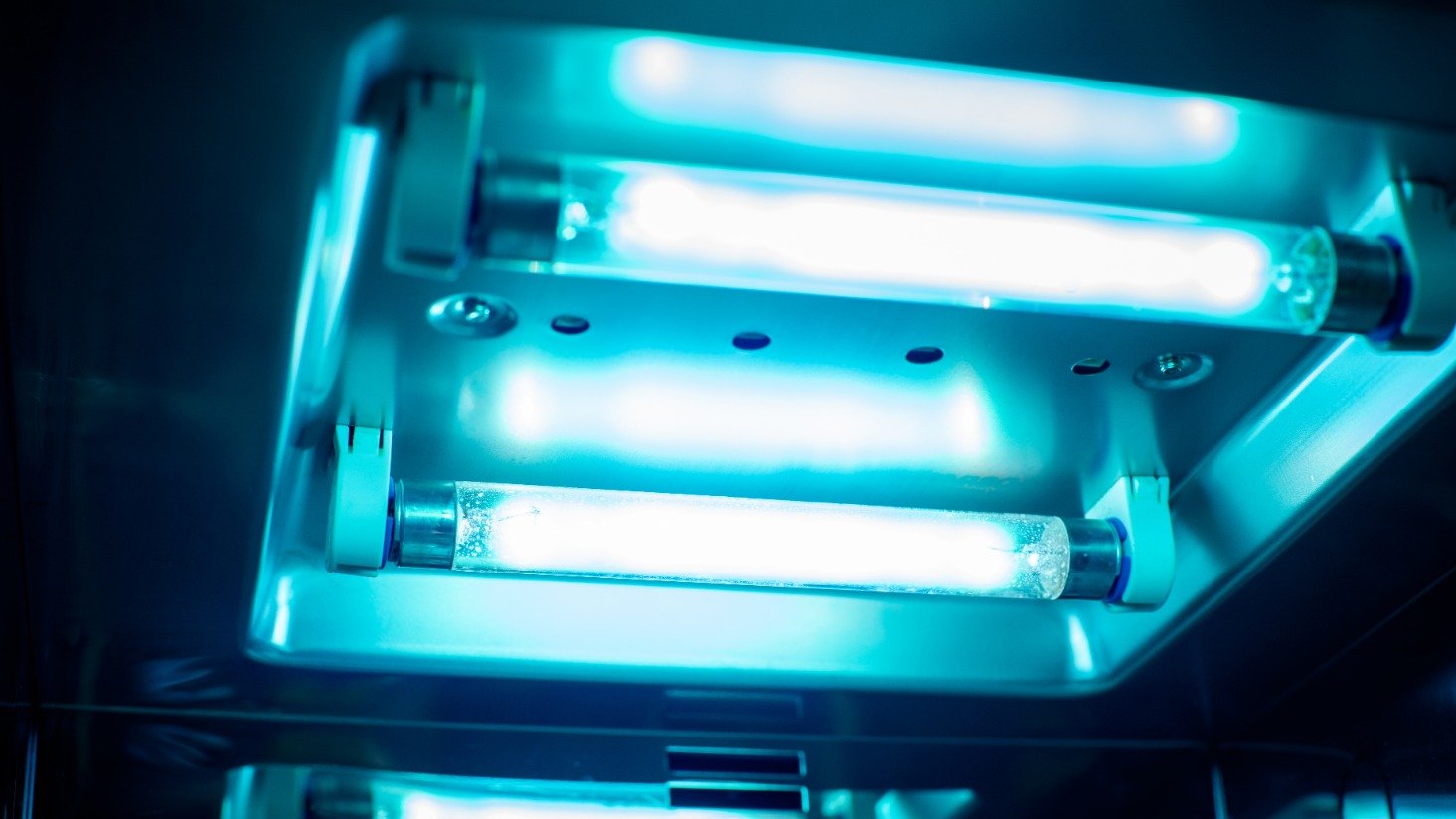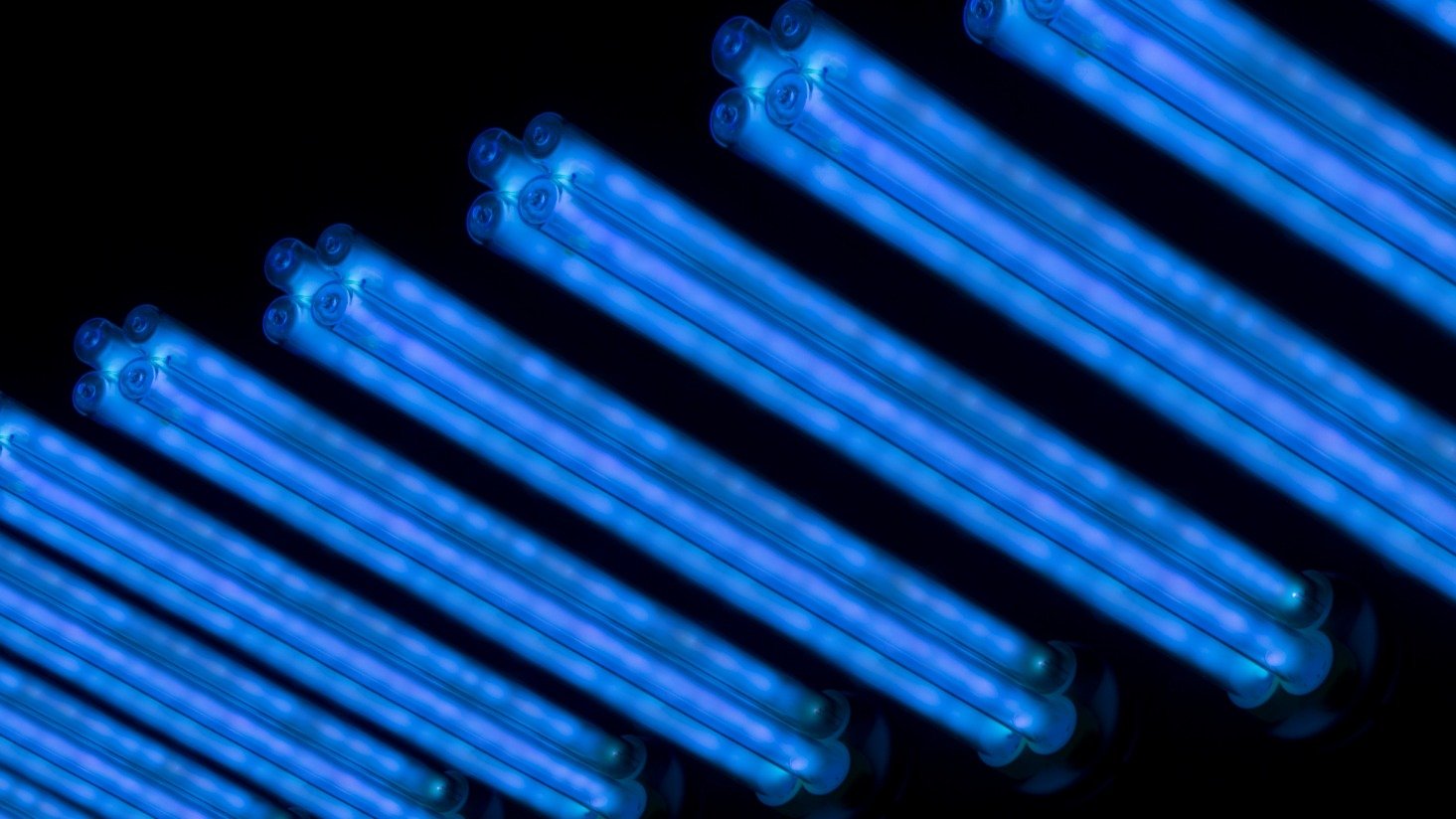Does all UV light kill viruses and bacteria?
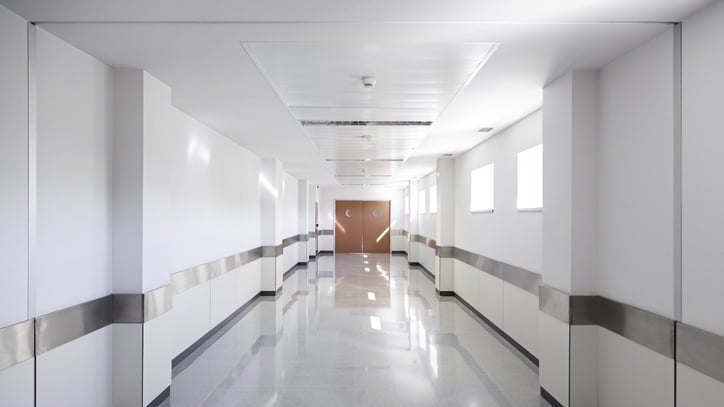
Ultraviolet (UV) light disinfection is getting a lot of attention during the coronavirus pandemic. The main benefit: its ability to kill pathogens like viruses and bacteria.
Some scientists say UV products could help our economy recover and help keep public places clean and safe.
But not all types of UV light are the same.
Before you make the investment into UV products, it's more important than ever to understand the options and differences between the products. There are a lot of new options popping up on the market. How can you decipher between them and find what you really need?
To help visualize the different types of UV, we made the graphic below of the ultraviolet spectrum. While UV rays are commonly called, "UV light," the spectrum technically falls just outside of the visible light spectrum.
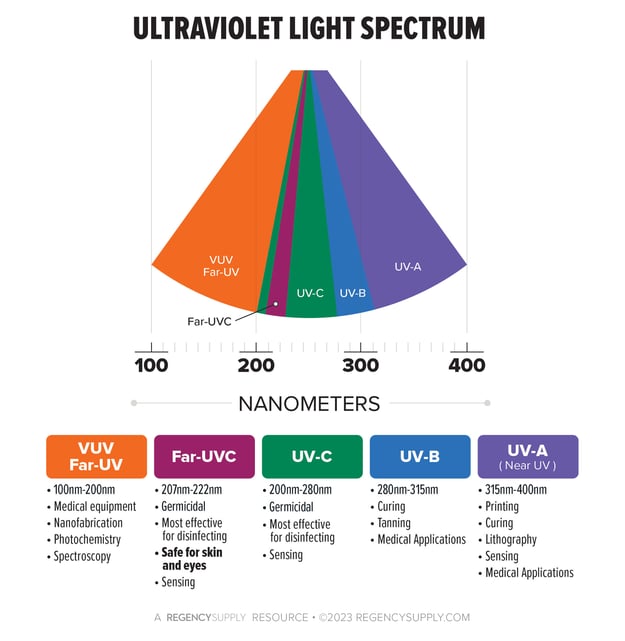
You're probably familiar with UV-A and UV-B. Those are the rays that hit the Earth's surface from the sun and the reason doctors recommend we wear sunscreen.
But you not be as familiar with other types of UV that are commonly used in disinfectant lighting products.
We'll talk about the following types of UV light. Click to jump ahead to each section:
UV-C or germicidal UV
UV-C, also known as germicidal UV, includes wavelengths from 200 to 280 nm.
This is the traditional form of germicidal UV that scientists have used to disinfect water, air, and surfaces for more than a century. UV-C is effective at destroying and deactivating all kinds of pathogens like viruses, bacteria, mold, and fungus.
Preliminary results show that UV-C can inactivate SARS-CoV-2, the virus that causes COVID-19.
While UV-C is an extremely effective option for disinfecting, it does come with a safety warning. Many UV-C products use 254 nm, which can penetrate the skin and eyes. Exposure to UV-C can cause burns.
Most products should only be used in empty rooms, which can be challenging for specific industries where there is little downtime.
There are several different applications and products for UV-C:
Regardless of which option you choose, we recommend only buying from a trusted and reputable manufacturer.
Far-UVC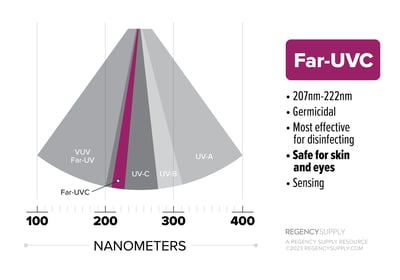
Far-UVC is a smaller segment of UV-C, specifically the wavelengths between 207 and 222 nm.
Here's what makes far-UVC different: It's believed to be safe for us to be around. This specific range of light has a very narrow bandwidth that cannot penetrate past the outer layer of our skin, but it can still inactivate viruses and bacteria.
Scientists started focusing on far-UVC in the last decade, so the research into potential side effects is more limited than UV-C.
While many scientists stand behind their research, experts in the lighting industry remain skeptical about the safety of far-UVC products.
In the past, most studies of far-UVC were performed on mice, not humans. However, a hospital in Japan released a study on the impact of far-UVC on humans in August 2020. The study found no side effects from far-UVC.
One benefit of far-UVC fixtures is the ability to constantly fight germs within a space.
Right now, there is a threshold limit for the dose of UV in an occupied space over an eight hour period. That may limit the amount of disinfection provided to surfaces.
Broad-spectrum UV
Broad-spectrum UV can include a combination of UV-A, UV-B, and UV-C wavelengths.
Because the spectrum is so broad, manufacturers that use this technology claim a higher efficacy against a wider range of pathogens.
One manufacturer we work with, PURO Lighting, uses broad-spectrum UV in its fixtures. PURO Lighting products are powered by Violet Defense Technology and use pulsed xenon lights to disinfect. When the product is on, you can see a "flash."
Broad-spectrum UV is not safe to be around, so PURO installed an occupancy sensor that stops the unit when motion is detected. You can also set the fixtures to run on a timer when a room is empty.
PURO™ products are available in wall or ceiling mounts and mobile disinfection units.
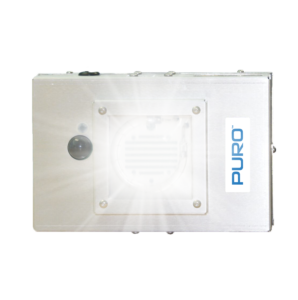
|
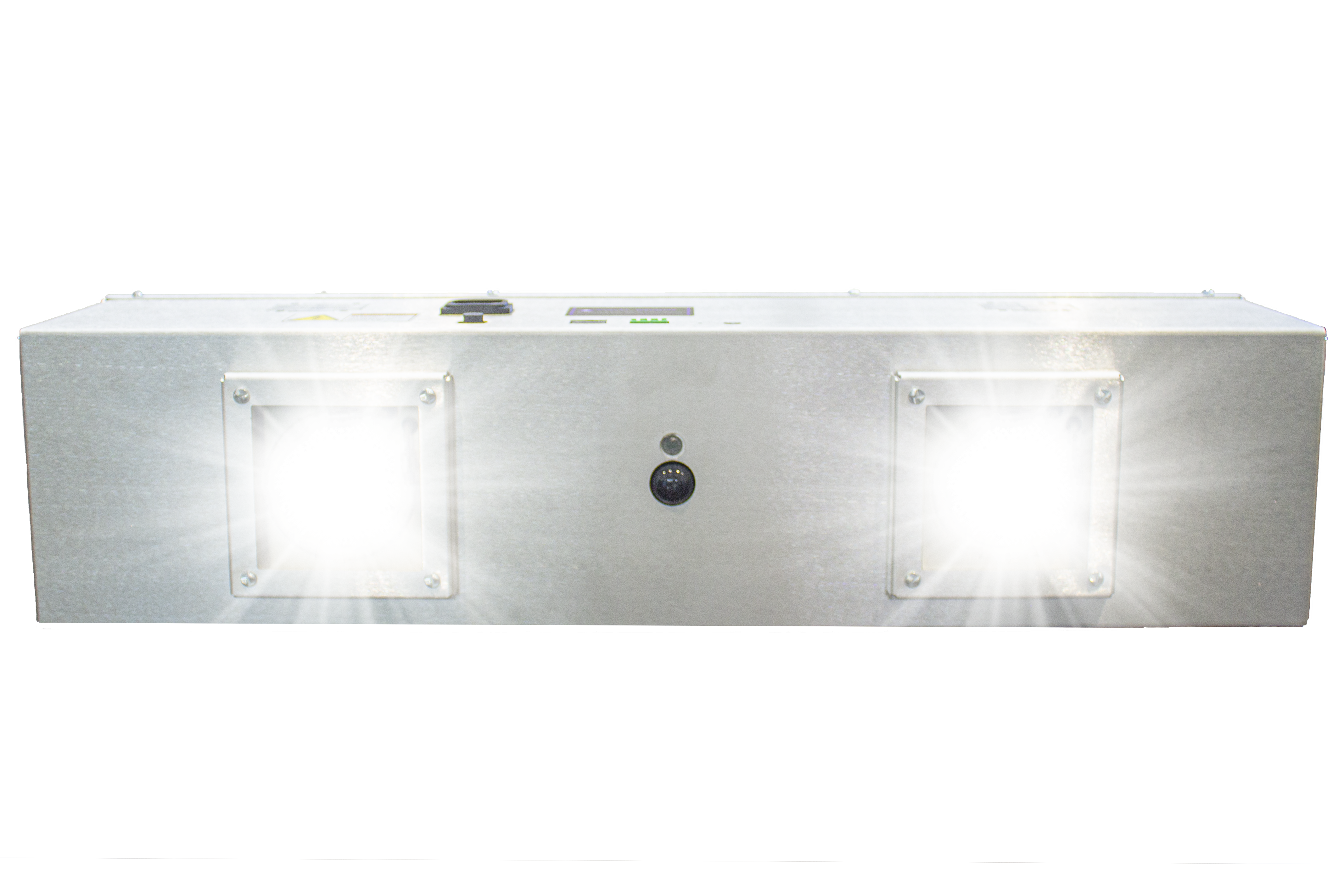
|
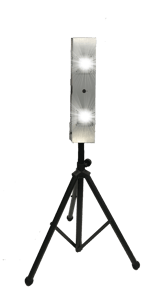 |
| PURO™ Helo F1 View product >> |
PURO™ Helo F2 View product >> |
PURO™ Sentry mobile units View products >> |
Near UV light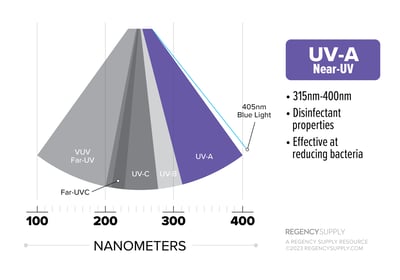
Near UV includes mostly UV-A wavelengths, which still has some germ-fighting bacteria but cannot inactivate viruses like UV-C. UV-A typically falls between the wavelengths of 300 to 400 nm.
Near UV can help reduce bacterial infection rates in medical facilities and senior care centers.
These wavelengths are very close to the visible light spectrum and are believed to be safe for humans.
While there is no guarantee UV-A products will eliminate SARS-CoV-2, the virus that causes COVID-19, they can help fight secondary infections.
One of our manufacturing partners is using light just outside of the UV-A range — specifically at a wavelength of 405 nm — to kill germs.
The products by Kenall are safe for high traffic areas, but still close enough to the UV spectrum to fight bacteria and provide at least 50% disinfection in hospitals.
The company released temporary lighting fixtures using this technology that can be easily installed into temporary medical tents.
UV product warning signs
How do you know if a UV product is going to kill pathogens as effectively as the manufacturer claims?
Make sure the product lists detailed specifications and safety guidelines. Manufacturers should include the range of UV so you know you're getting the proper disinfection for your application.
UV can be used for many other purposes like printing or tanning beds, and not all UV lights are germicidal. If you're unsure, carefully review the product's spec sheet or the manufacturer's website.
You can test the efficacy of UV products with a card called a UVC dosimeter.
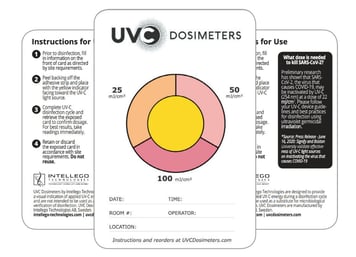 Watch the video below to see how to see how it works.
Watch the video below to see how to see how it works.
Choosing the right UV product to protect employees, customers, and tenants in your facility can be overwhelming. Our team is here to help you sift through the options and find the right disinfection solution.
Please do not hesitate to contact us with any questions or lighting challenges.
